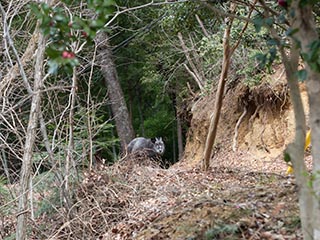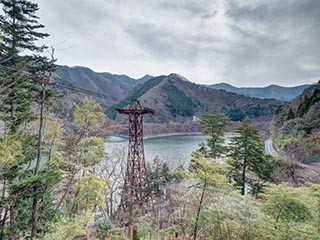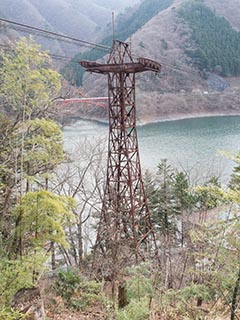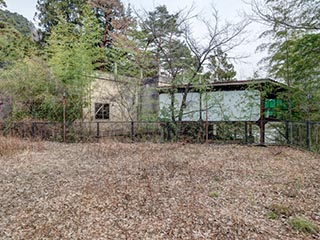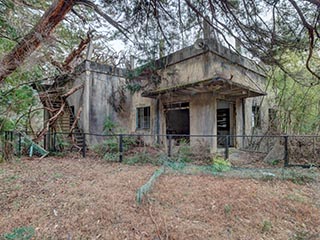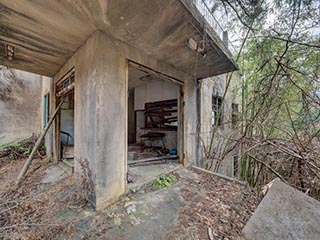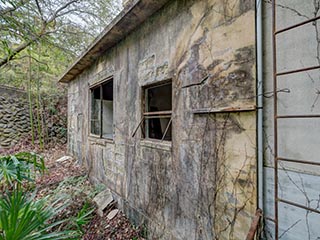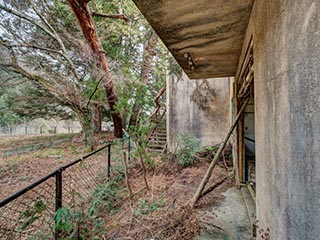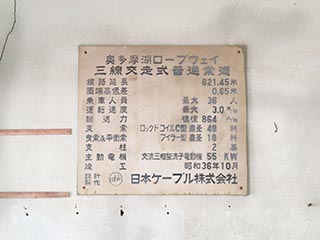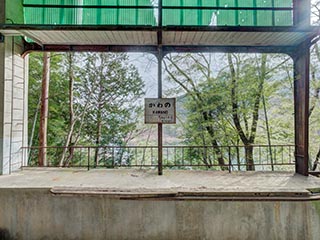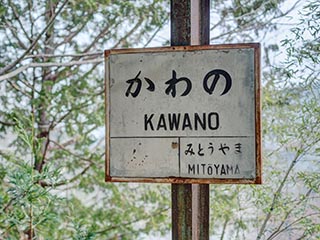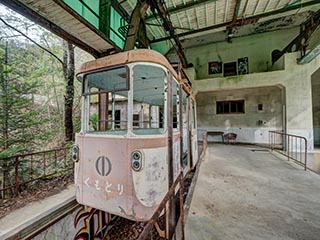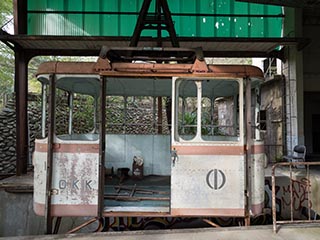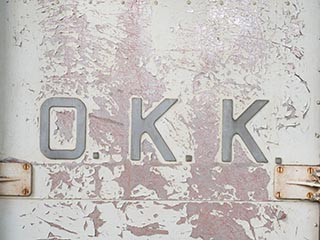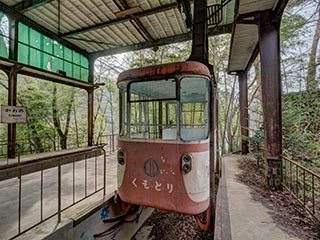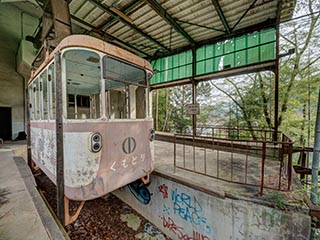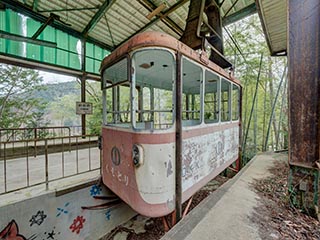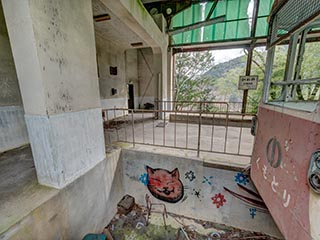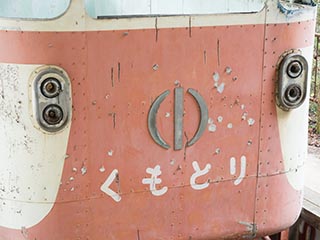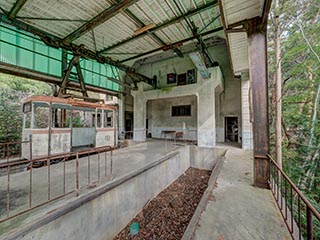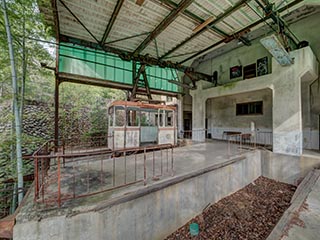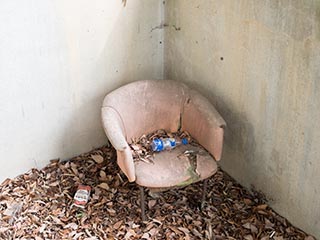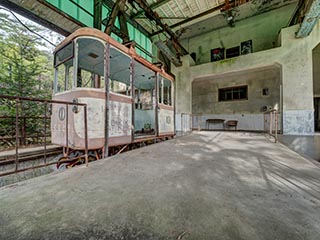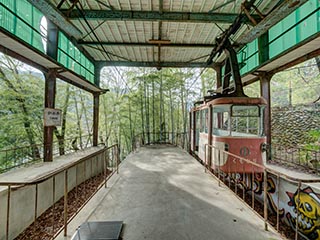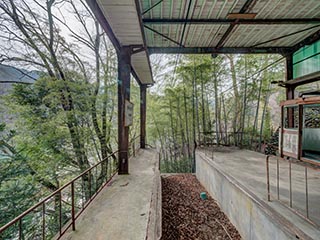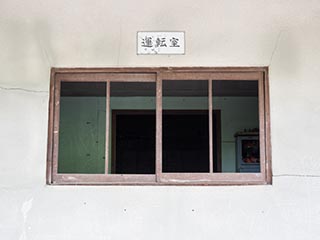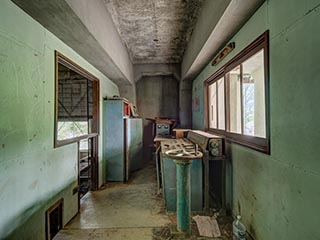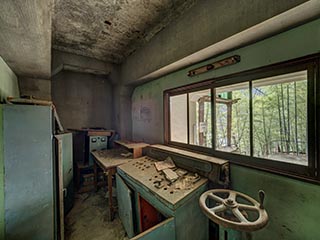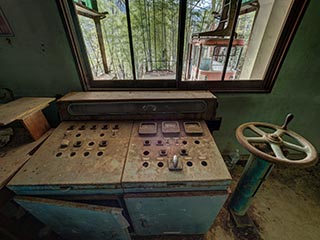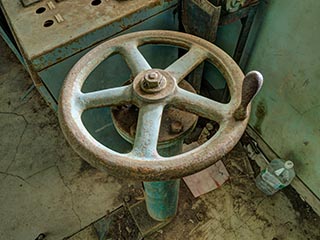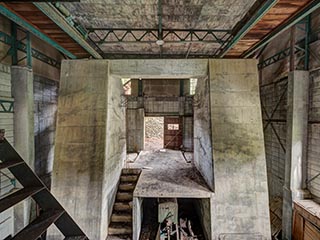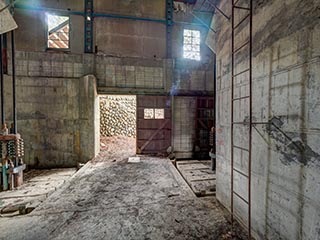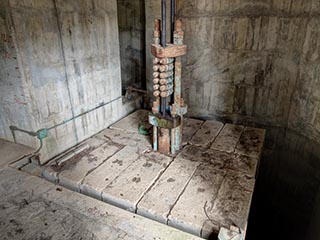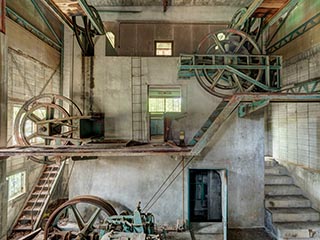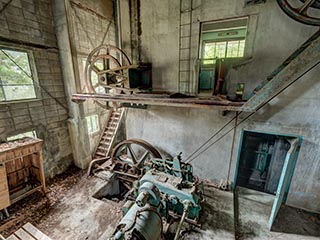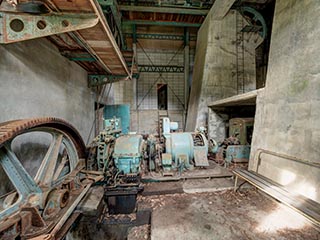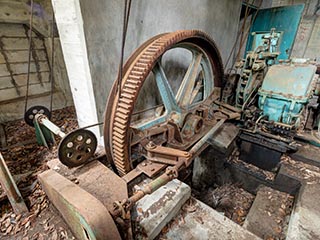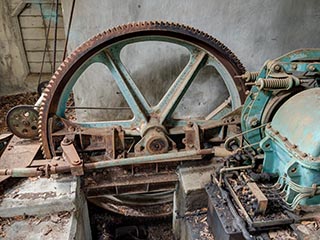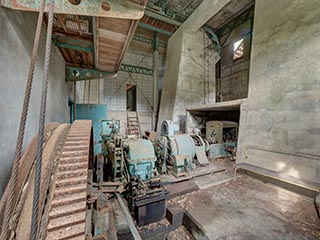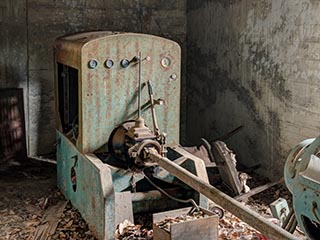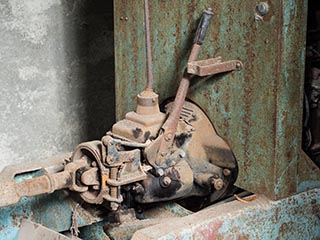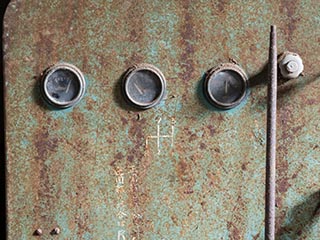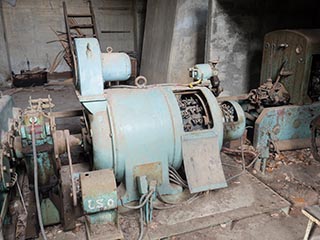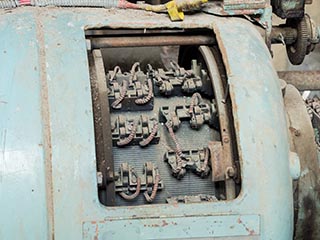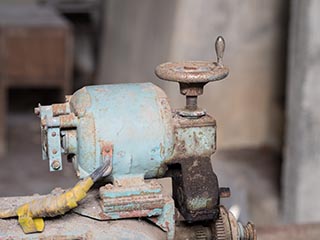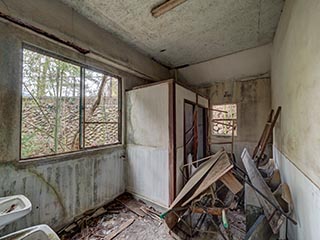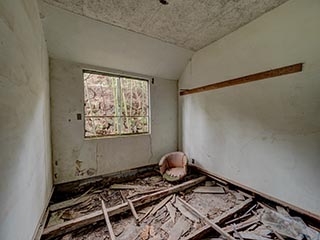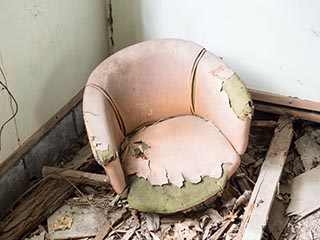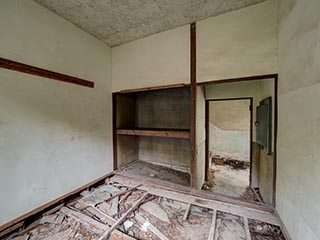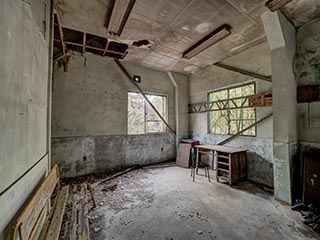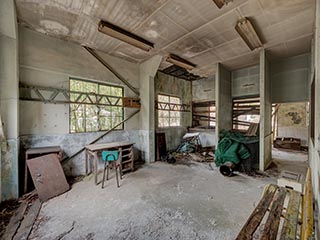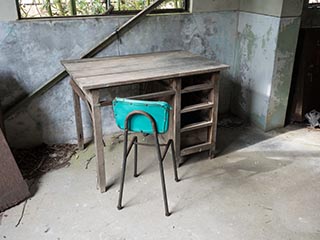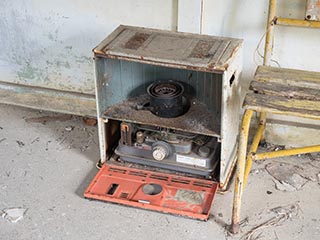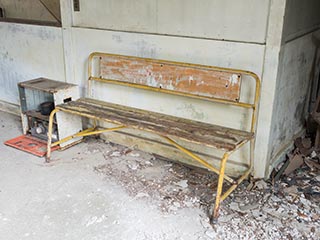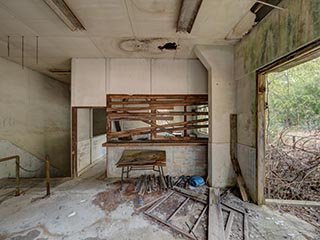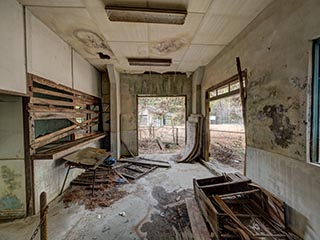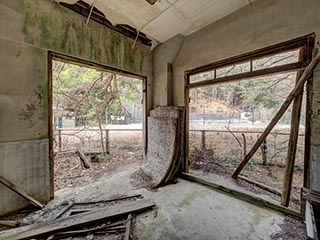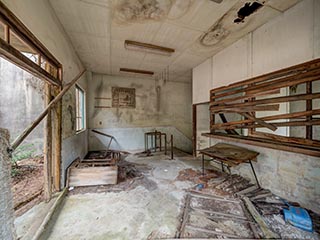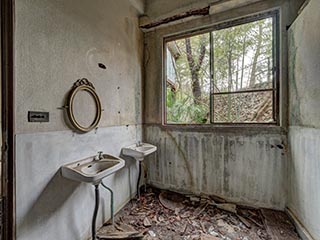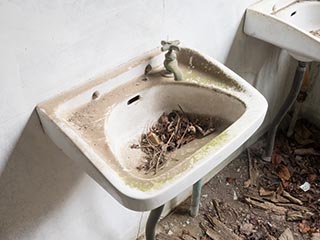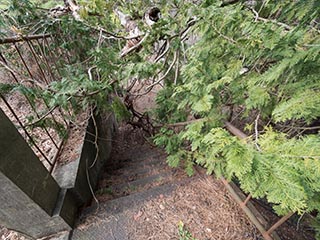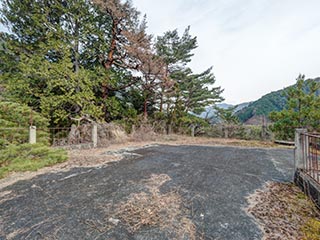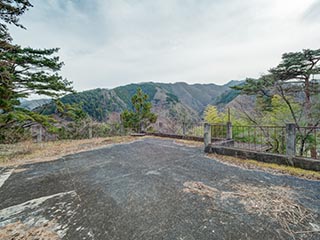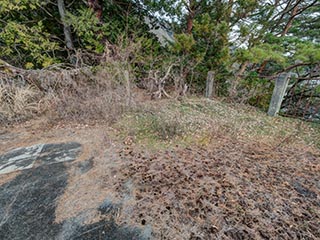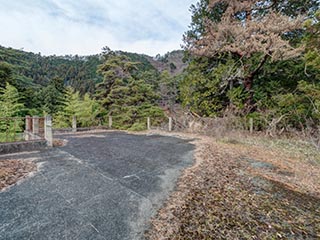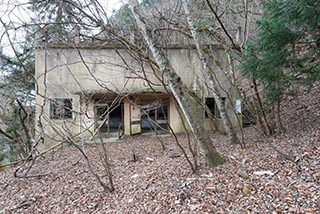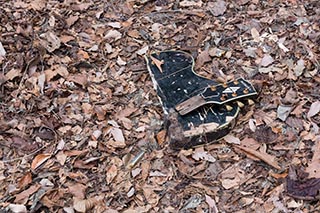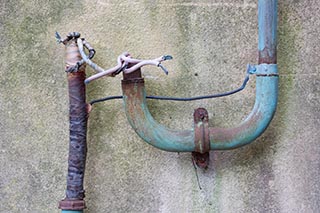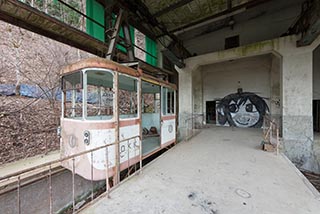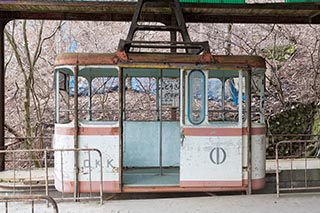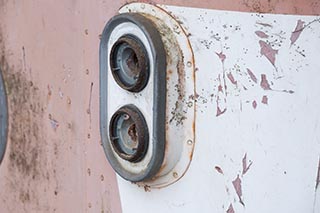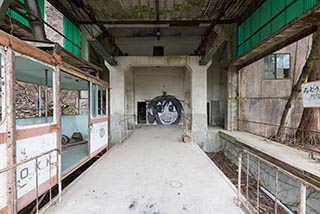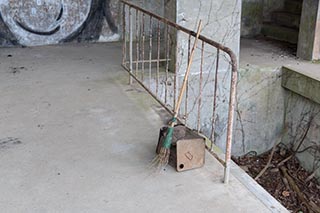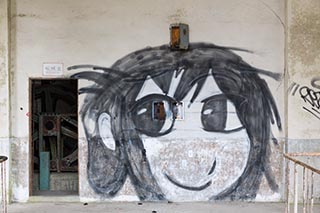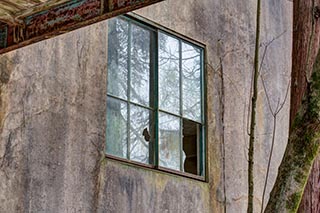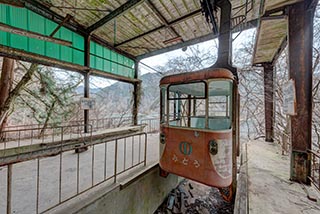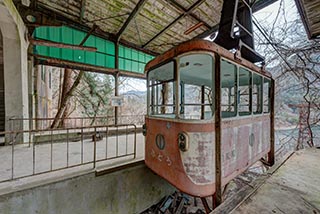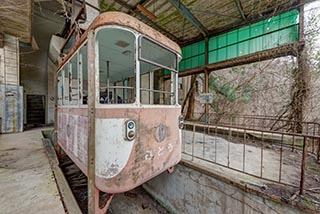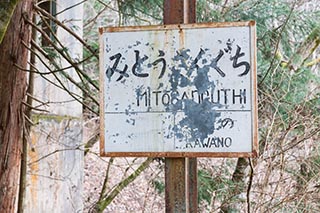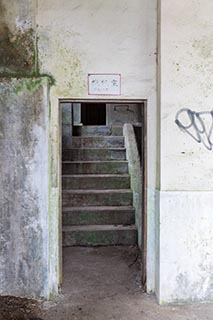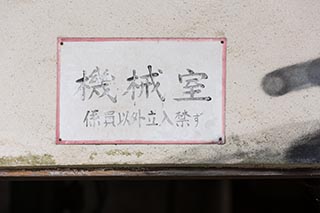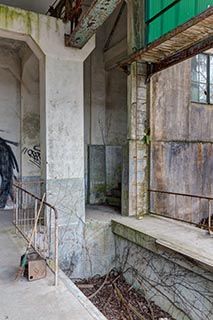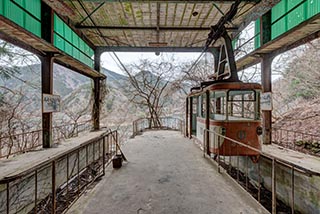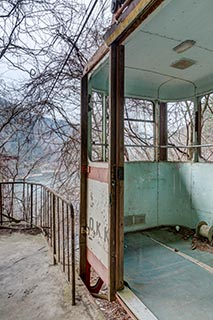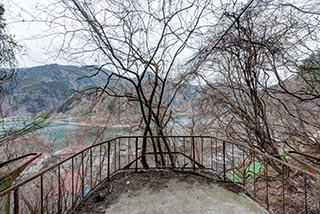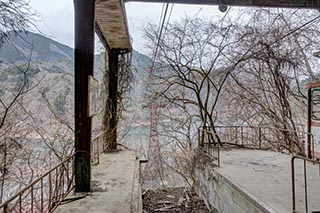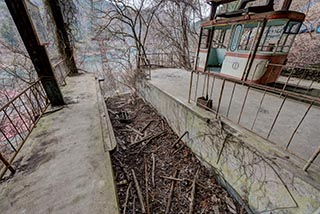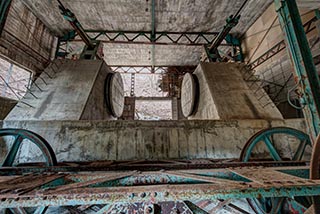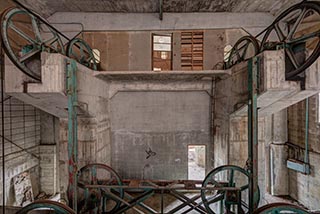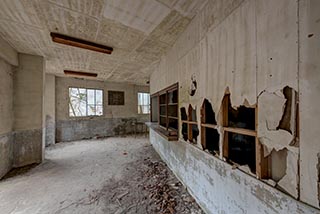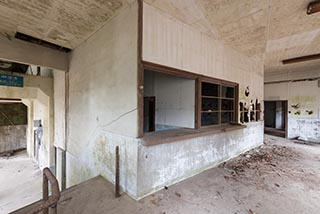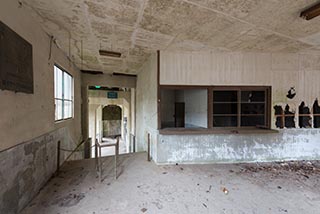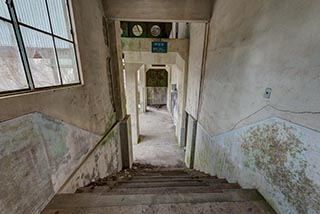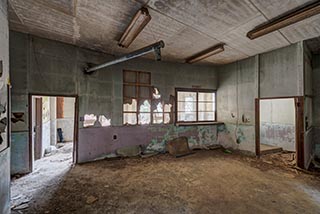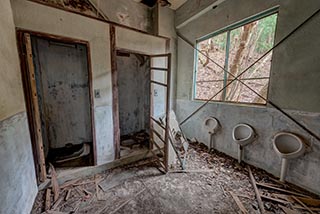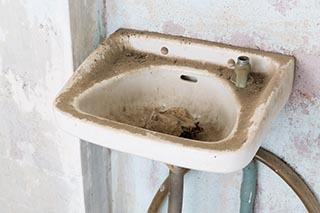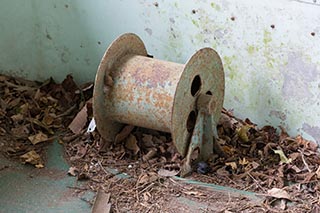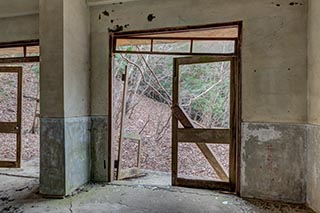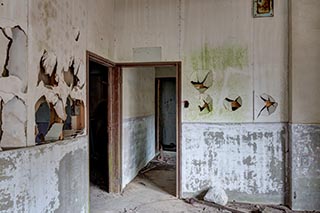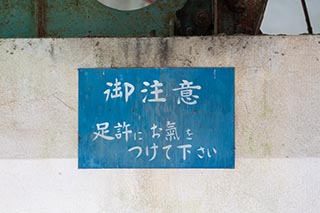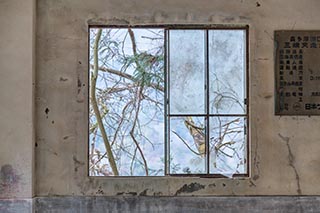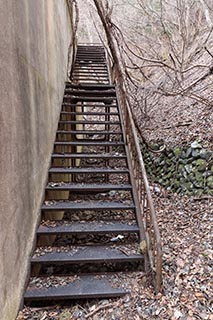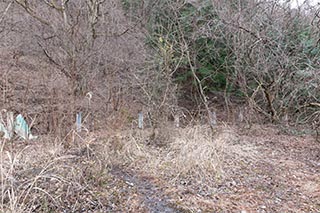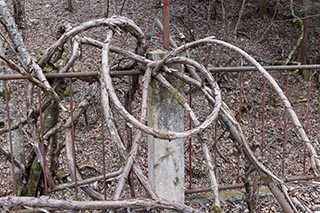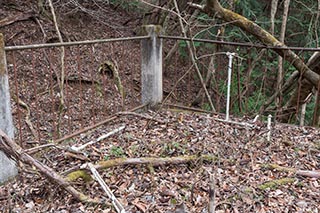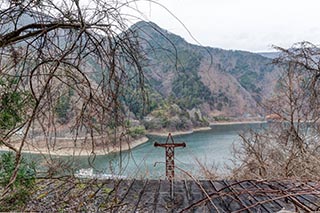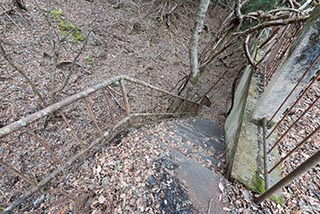Kawano Ropeway once carried passengers on a 621 metre journey above the waters of Lake Okutama, to the west of Tokyo. There were only two stations, Kawano on the north side of the lake, and Mitosanguchi on the south. Although the lake is officially within the borders of Tokyo, it's actually well outside the city, and the surrounding landscape is wooded and sparsely populated.
A friend and I drove out to Lake Okutama and explored the ropeway in January 2016. Our route followed the northern shore of the lake, so we visited Kawano Station first. We parked in a large empty car park close to where we reckoned the station to be, and managed to find it without any serious difficulties.
We saw a wild goat on the way, and I managed to get a few photographs before it fled. Unfortunately I wasn't carrying a telephoto lens, so none of my shots were very good.
The station turned out to be behind a dilapidated tennis club with high fences, but a short detour through the woods took us around that obstacle.
Kawano Ropeway is said to have been open for a mere six years, from 1961 to 1966, which would mean that it had already been abandoned for nearly half a century by the time we visited. For such a long neglected structure, the station was in surprisingly good condition. Apart from a little graffiti I didn't notice any vandalism. The cables still extended across the lake to the opposite station, and a cable car hung at one of the platforms.
A notice on the wall near the ticket gates gave some statistics on the ropeway:
Line Length: 621.45 metres
Difference in Elevation Between Stations: 0.65 metres
Cable Car Passenger Capacity: 36 people
Maximum Speed: 3 metres/second
Passenger Carrying Capacity: 864 people per hour
Support Rope: Locked Coil C Type 48 mm Diameter
Haulage Rope: Filler Type 18 mm Diameter
Support Towers: 2
Drive Motor: 55 Kilowatt 3 Phase AC Commutator Motor
Construction Completed: October 1961
The ropeway used stationary track ropes to support the cable cars, and separate haulage ropes to propel them. The arms of the cable cars ran along the tops of the track ropes on rollers, pulled along by the moving haulage ropes. Each cable car was pulled by two haulage ropes, which would have provided a margin of safety in case one of them broke. You can see the three separate ropes in some of the photographs if you look closely.
Since the cable cars were passively pulled along by the haulage ropes, there were no controls onboard. The ropeway was controlled from a small room overlooking the platform from the rear. The machinery for winding the haulage ropes was in a spacious machinery hall behind the control room. The machinery had all been left in place, so it was an interesting and photogenic scene. Apart from the inevitable corrosion it looked undamaged.
I noticed that the winding gear had two means of propulsion - a large electric motor, and an internal combustion engine with a four speed manual gearbox. I presume that the latter served as a backup in case of electrical outage.
The doors were long gone, so nothing hindered us from exploring the whole building. Apart from the control room and machinery I didn't notice anything of particular interest. The stairs to the roof were partly obstructed by fallen branches, but they weren't a serious problem.
After exploring Kawano Station, we took a break for lunch and drove across the lake toward the southern end of the ropeway. Getting to Mitosanguchi Station proved to be extremely easy. There was a carpark immediately across the road, and a staircase leading up from the road to the hillside where the station building stood. The remains of the building's doors were hanging open, and nobody had bothered to put up a fence, or even a No Tresspassing sign, so we just walked straight in. There was a construction crew at work nearby, reinforcing the hillside to prevent landslides. It was impossible to hide from the workmen, but they ignored us. Given the complete lack of security I doubt that anyone would have cared much about us being there.
Mitosanguchi was much the same as Kawano. The ropeway's other cable car was hanging at one of its platforms. I believe that the haulage ropes formed a continuous loop attached to both cable cars, so that they alway travelled in opposite directions. On each run one car would have departed from Kawano, while the other departed from Mitosanguchi. They would have passed each other in the middle of the lake, and reached their destinations simultaneously. After their final journey, the cable cars therefore came to rest on opposite sides of the lake, never to meet again.
A ropeway only needs one set of winding machinery, so Mitosanguchi station had nothing but a system of pulleys. With no machinery to control, there was no control room either.
The building was in decent condition, although someone had bashed a few holes in the walls. I discovered a geocache in one of the rooms, but didn't notice anything else worth mentioning.
I climbed the stairs to the roof, which was so covered in leaf litter, fallen branches, and vegetation that it resembled the forest floor below. There was a decent view over the lake, although branches obscured it somewhat. It would have been more photogenic on a sunny day.
